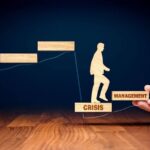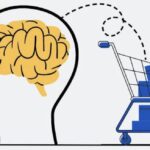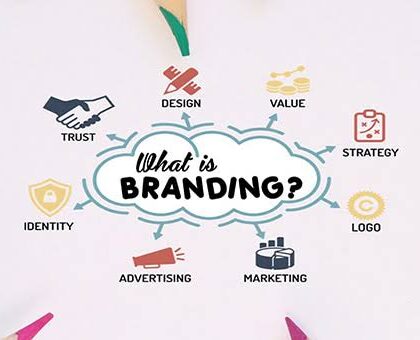
Trigger Happy Sales: How Emotional Triggers In Marketing Drive Conversions
Want to skyrocket engagement? Learn how emotional triggers in marketing like trust, fear, and joy shape consumer behaviour. Master marketing psychology and emotional branding to craft campaigns that connect, convert, and sell. Discover the secrets of using psychological triggers in marketing campaigns to boost customer loyalty!
Table of Contents
- Introduction: Why Emotional Triggers in Marketing Work
- The Psychology Behind Consumer Emotions
- How to Use Different Emotional Triggers in Marketing
- Trust: The Foundation of Brand Loyalty
- Fear: The Power of Urgency & FOMO
- Joy: Creating a Positive Brand Association
- Implementing Emotional Triggers in Marketing for Better Conversions
- Conclusion: Turn Emotions into Sales with Smart Marketing
Why Emotional Triggers In Marketing Work
Consumers don’t buy products. They buy emotions. Every successful campaign taps into psychological triggers that influence decision-making. Emotional triggers in marketing play a crucial role in shaping how customers perceive brands, products, and services.
From emotional branding to fear-based urgency, brands use emotions to establish deeper connections with their audience. If your marketing strategy isn’t leveraging emotions, you’re missing out on a powerful way to increase engagement, trust, and sales.
This blog will break down how consumer emotions drive behaviour, the psychology behind them, and how you can incorporate emotional triggers in marketing to create high-converting campaigns.
The Psychology Behind Consumer Emotions
Why do some ads make us laugh, while others make us anxious enough to buy immediately? The answer lies in marketing psychology—the study of how emotions influence purchasing decisions.
Research shows that people rely more on emotions than logic when making purchases. This means that a well-crafted campaign using the right emotional triggers can significantly boost sales and brand loyalty.
Here’s how brands use emotional appeals effectively:
✔ Memory Recall – Emotional experiences are more memorable than neutral ones.
✔ Decision-Making – People justify purchases emotionally and then rationalise them with logic.
✔ Brand Trust – Positive emotions like joy and trust foster long-term customer relationships.
Now, let’s explore how different emotional triggers in marketing impact consumer behaviour.
How To Use Different Emotional Triggers In Marketing
Trust: The Foundation of Brand Loyalty
Trust is the most critical factor in turning prospects into loyal customers. Without it, no amount of advertising will convince people to buy.
How to build trust in marketing:
✔ Leverage emotional branding through storytelling that resonates.
✔ Show real customer testimonials and social proof.
✔ Offer transparent communication about products/services.
A great example is how Apple markets itself—by emphasizing privacy and security, reinforcing trust with its audience.
Fear: The Power of Urgency & FOMO
Fear is a powerful motivator in psychological triggers in marketing campaigns. People act quickly to avoid missing out or to protect themselves from risks.
How to use fear-driven marketing:
✔ Use FOMO (Fear of Missing Out) in limited-time offers.
✔ Highlight problems and position your brand as the solution.
✔ Create urgency with countdown timers and “only a few left” messages.
For instance, cybersecurity companies effectively use fear by showing risks of data breaches, compelling customers to take action.
Joy: Creating a Positive Brand Association
Positive emotions make customers return. When a brand makes people feel happy, they associate that feeling with the brand.
How to incorporate joy in marketing:
✔ Use vibrant colors and uplifting visuals.
✔ Create campaigns around celebrations, happiness, and nostalgia.
✔ Leverage humor and relatable storytelling in ads.
Think of Coca-Cola’s “Open Happiness” campaign—it doesn’t sell soda; it sells an experience of joy and togetherness.
Implementing Emotional Triggers In Marketing For Better Conversions

Now that you understand how emotions impact buying behavior, here’s how to apply them effectively:
✔ Use emotional storytelling – Weave emotions into your brand’s narrative to make your message stick.
✔ Optimise ad copy with emotions – Use powerful words that evoke feelings like “secure,” “urgent,” or “joyful.”
✔ Test different emotions – A/B test emotional angles to see what resonates best with your audience.
✔ Leverage video content – Videos are the most emotionally engaging content type. Use them to evoke strong reactions.
By integrating emotional triggers in marketing across different platforms, you create a persuasive experience that leads to conversions.
Conclusion: Turn Emotions Into Sales With Smart Marketing
Marketing isn’t about selling a product—it’s about selling a feeling. When you master emotional triggers in marketing, you tap into consumer emotions that drive loyalty and sales.
Want to boost engagement and conversions? Start using psychological triggers in marketing campaigns to build trust, create urgency, and spread joy. Your audience will not only remember you—they’ll buy from you.
Need help crafting an emotionally powerful marketing strategy? Contact us today and let’s make your brand unforgettable!





